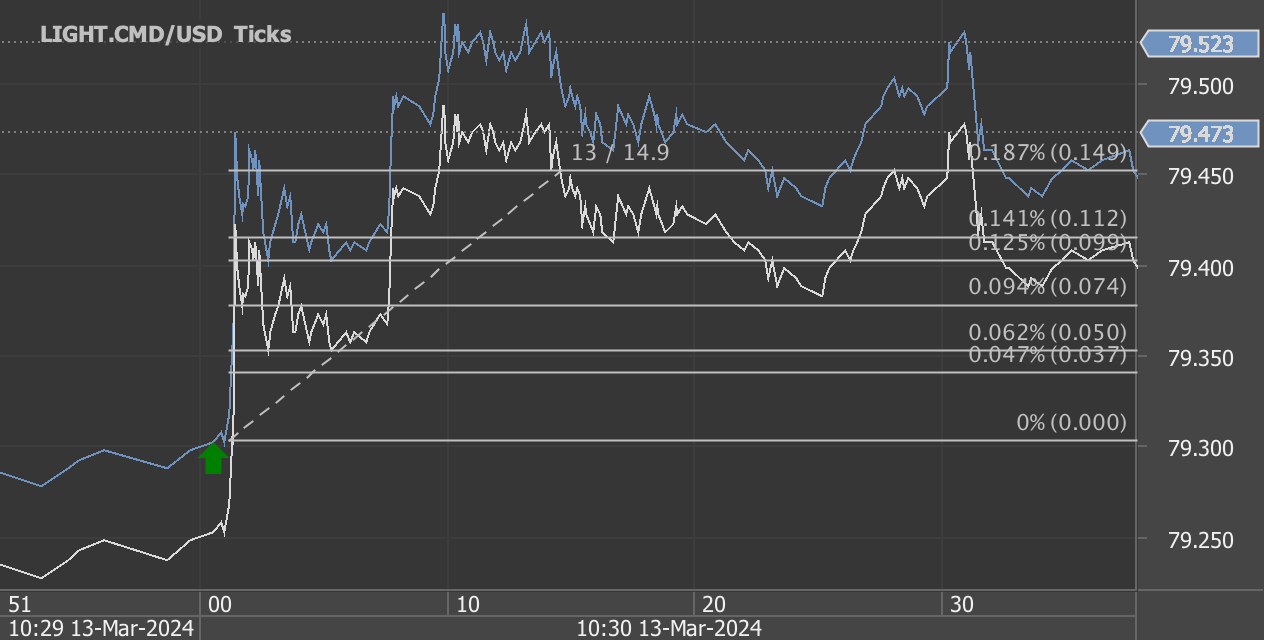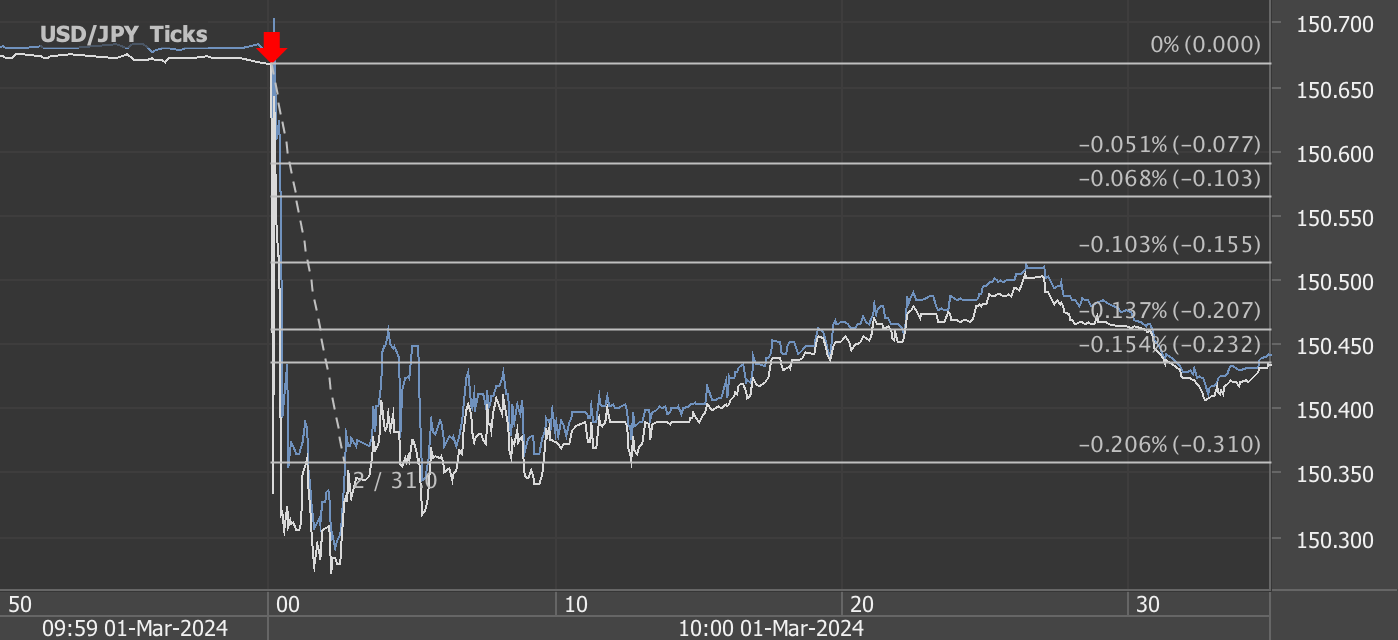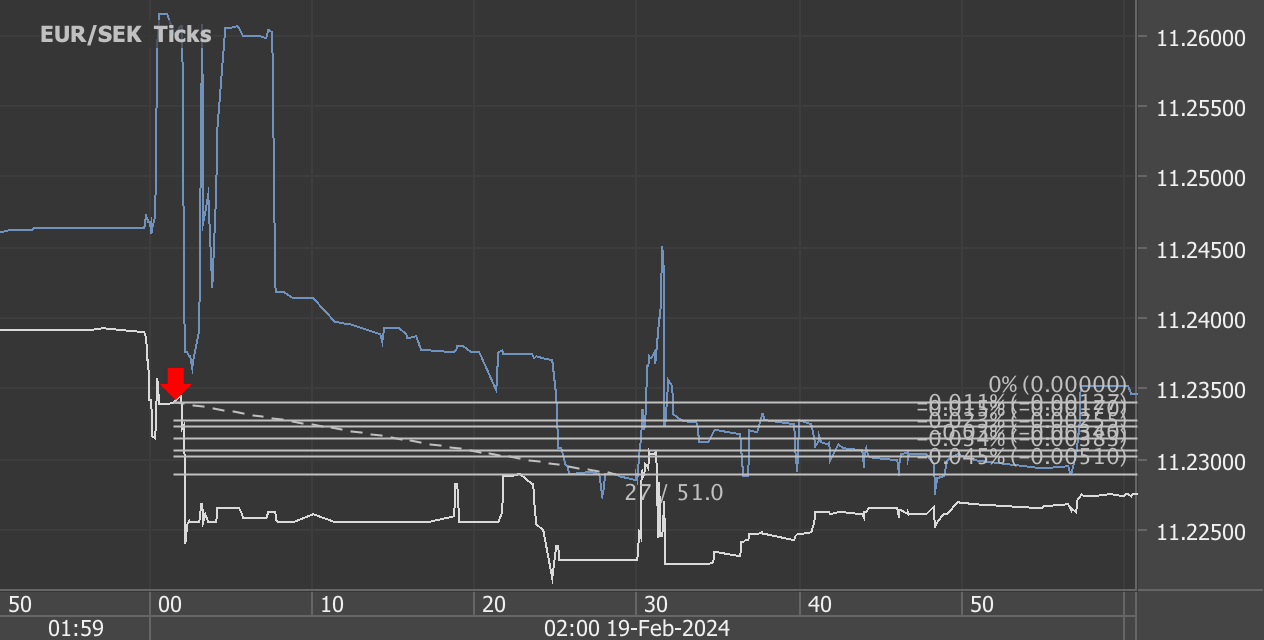According to our analysis USDTRY moved 1186 pips on Turkey interest rate decision (TCMB) data on 21 March 2024.
USDTRY (1186 pips)
Charts are exported from JForex (Dukascopy).
Understanding the Recent Move: A Dive into the Monetary Policy Committee's Decision to Hike Interest Rates
On March 21, 2024, the Monetary Policy Committee (MPC), under the leadership of Governor Yaşar Fatih Karahan and members Osman Cevdet Akçay, Elif Haykır Hobikoğlu, Hatice Karahan, and Fatma Özkul, made a pivotal decision in the realm of Turkey's economic policy. In a move aimed at curbing the inflationary pressures that have beleaguered the economy, the Committee announced an increase in the policy rate, specifically the one-week repo auction rate, from 45 percent to an assertive 50 percent. This significant rate hike is a clear signal of the central bank's intention to tighten monetary conditions in response to the deteriorating inflation outlook.
The Reason Behind the Hike
February saw an unexpected spike in monthly inflation, primarily driven by services inflation. Despite a slowdown in the imports of consumption goods and gold, which positively contributed to the current account balance, indicators suggest that domestic demand continues to be robust. The MPC has highlighted several factors that keep inflationary pressures alive: stickiness in services inflation, inflation expectations, geopolitical risks, and food prices.
In an effort to counteract these pressures, the Committee has also decided to adjust the monetary policy operational framework. This adjustment includes setting the Central Bank overnight borrowing and lending rates 300 basis points below and above the one-week repo auction rate, respectively. This strategy is aimed at ensuring the effectiveness of the monetary policy transmission mechanism.
The Strategy Moving Forward
The MPC's decision to raise the policy rate underscores a broader strategy to maintain a tight monetary stance until there is a significant and sustained decline in the underlying trend of monthly inflation. The Committee has also expressed its readiness to tighten the monetary policy stance further if inflation deteriorates significantly and persistently.
The central bank's determination to maintain a tight monetary stance is expected to moderate domestic demand, lead to a real appreciation in the Turkish lira, and improve inflation expectations. These measures, in turn, are projected to contribute to a decrease in the underlying trend of monthly inflation, establishing a path toward disinflation in the second half of 2024.
Macroprudential Policies and Future Outlook
Alongside monetary tightening, the Committee continues to implement macroprudential policies to preserve market mechanism functionality and macrofinancial stability. These include tightening financial conditions and reinforcing monetary policy transmission with measures taken in March. The MPC emphasizes the importance of monitoring market liquidity closely and effectively using sterilization tools as needed.
Looking ahead, the Committee will consider the lagged effects of monetary tightening in its policy decisions, aiming to create the monetary and financial conditions necessary for a decline in the underlying trend of inflation. The ultimate goal is to achieve the 5 percent inflation target in the medium term.
The MPC's decision-making process will remain predictable, data-driven, and transparent. The summary of the Monetary Policy Committee Meeting will be released within five working days, providing further insights into the Committee's analysis and expectations.
Conclusion
The recent decision by the Monetary Policy Committee to increase interest rates marks a critical step in Turkey's fight against inflation. By taking a decisive and transparent approach, the Committee aims to stabilize prices and lay the groundwork for sustainable economic growth. As the situation evolves, the central bank's actions will be closely monitored by investors, policymakers, and the public, who are eager to see the return of price stability and economic prosperity.
Start forex fx news trading with Haawks G4A low latency machine-readable data today, one of the fastest news data feeds for US and European economic and commodity data.
Please let us know your feedback. If you are interested in timestamps, please send us an email to sales@haawks.com.















